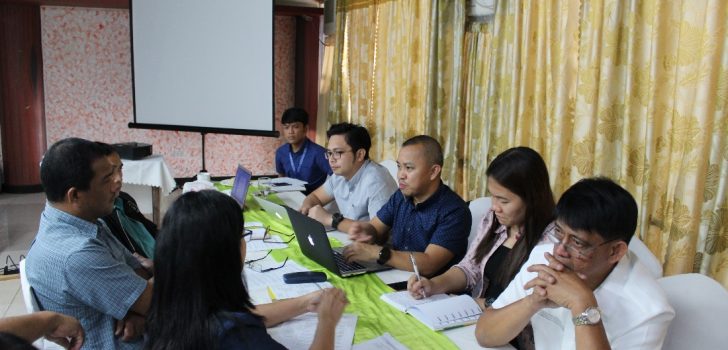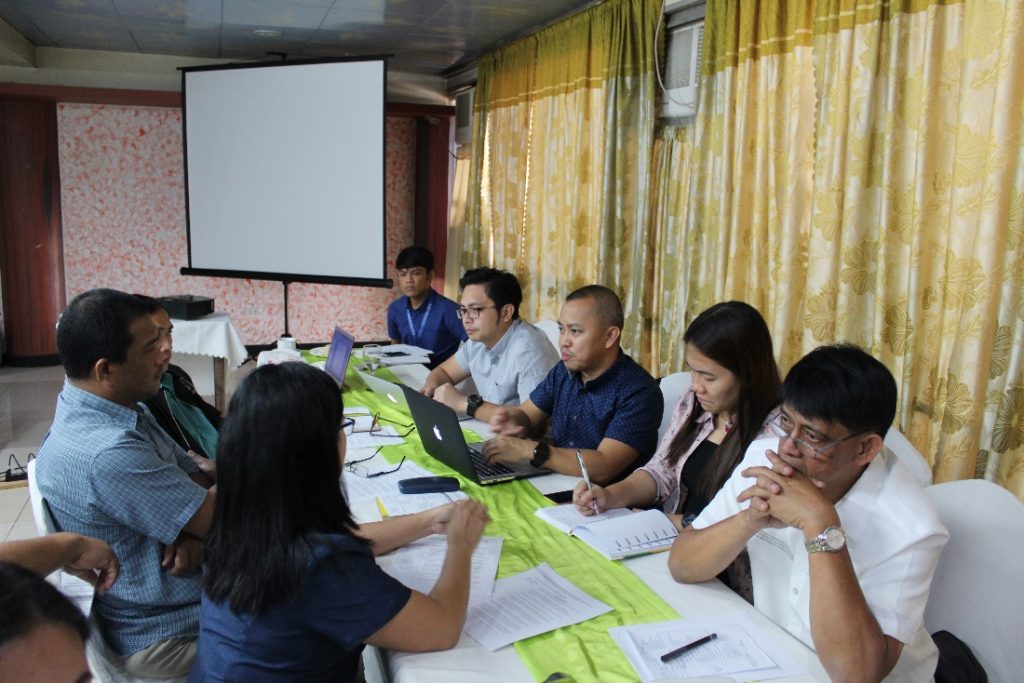 The PRDP team gathers the inputs and perspectives of the representatives from National Government Agencies such as Landbank of the Philippines, Department of Trade and Industry, Department of Science and Technology, and Bureau of Plant Industry during one of the focus group discussions. (Photo by Leira Vic Colongon, DA-PRDP MIMAROPA RPCO InfoACE Unit)
The PRDP team gathers the inputs and perspectives of the representatives from National Government Agencies such as Landbank of the Philippines, Department of Trade and Industry, Department of Science and Technology, and Bureau of Plant Industry during one of the focus group discussions. (Photo by Leira Vic Colongon, DA-PRDP MIMAROPA RPCO InfoACE Unit) Puerto Princesa pushes for CIP enhancement
The members of the national, cluster, and regional offices of the Philippine Rural Development Project (PRDP) evaluated the City Commodity Investment Plan (CCIP) for the three priority commodities of Puerto Princesa City: cashew, mango, and seaweeds, on May 2–4, 2018.
The CIP is one of the scientific tools developed by the PRDP as part of the planning phase of its project interventions. Derived from the Value Chain Analysis (VCA), it defines opportunities for rural development.
The purpose of the activity is to assess the effectiveness of the CIPs by gathering issues and determining factors for its improvement. There is a need to evaluate the CIP based on its usefulness as a planning tool for the local government units especially now that the PRDP is in its fourth year.
“Our output from this activity, from all the participating sectors will be useful in the implementation of future investment plans of our priority commodities,” explained PRDP MIMAROPA I-PLAN Component Head Marilyn Bienes.
The assessment was conducted through three separate focus group discussions with the key players involved in the formulation and updating of the CIPs for the priority commodities. These are the members of the City Project Management and Implementing Unit (CPMIU), National Government Agencies (NGAs), and other stakeholders including farmers, traders, processors, assemblers, farmers’ organization, and trader groups.
It was noted that the support of the Local Chief Executives is one of the factors that drove the right execution of the CIP in Puerto Princesa. Reinforced by close collaboration among the members of the local government, participating agencies, other offices, and stakeholders, relevant information needed to complete the CIP were easily obtained.
There were still constraining situations identified by the participants which needed to be addressed to improve the formulation and implementation of the CIP in the future. The absence of some stakeholders and variation of representatives during meetings and consultations led to limited information dissemination and guidance from the main actors of the industries.
To address this, the NGAs will designate permanent members who will be involved from the preparation to the completion of the CIP. This will pave the way for better and consistent coordination. Moreover, information on CIP-related activities to be conducted by the local government will be properly disseminated to other stakeholders.
Meanwhile, the DA-PRDP has been providing interventions to the cashew and mango growers of Puerto Princesa City since the completion of the CIP. These are the Bukang Liwayway–Makandring Farm-to-Market Road (FMR) in Brgy. Langogan and the on-going Mango Processing Facility and Marketing in Brgy. Inagawan.
“It is important to understand that an approved or implemented PRDP subproject came about because there is synergy, cooperation, collaboration, and unity in all levels from the community grassroots level to the City Government, DA, PRDP and NGAs,” said City Agriculturist Melissa Macasaet.
The City Government, on the other hand, was also able to fund their own investments for the input supply, production, processing, and marketing segments of the value chain for the three industries. Some of these include the city’s nursery and satellite propagation farm maintenance for cashew and mango, provision of farm machineries for cashew and mango, and provision of processing equipment for seaweeds. With the United States Agency for International Development, the LGU was also able to establish the Palawan Seaweeds Network for Market Linkage.
On the other hand, the DA’s High Value Crops Development Program and Bottom Up Budgeting are also funding the fertilizer and pesticides for the rehabilitation of mango trees as well as the cashew nuts agri-processing centers with materials and tools. ### (Leira Vic Colongon, DA-PRDP MIMAROPA RPCO InfoACE Unit)

The PRDP team gathers the inputs and perspectives of the representatives from National Government Agencies such as Landbank of the Philippines, Department of Trade and Industry, Department of Science and Technology, and Bureau of Plant Industry during one of the focus group discussions. (Photo by Leira Vic Colongon, DA-PRDP MIMAROPA RPCO InfoACE Unit)

